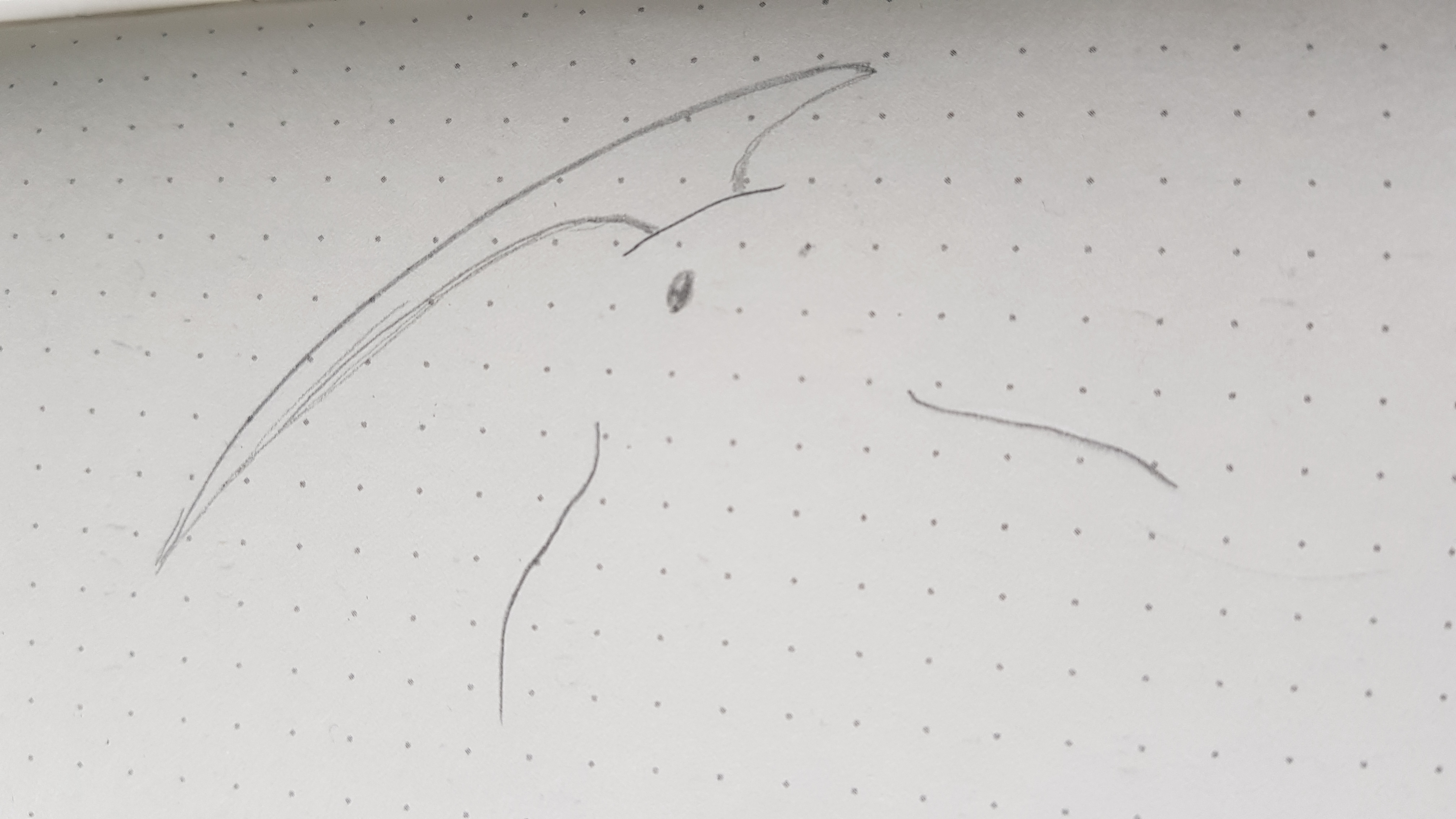Copperhorn
The copperhorn is a very large omnivorous, 6-legged animal that lives high up in the mountains. They live in small packs of about 4 to 6 animals and have two massive copper-coloured horns on their heads. They have the statue of an Ibex ram, but are the size of ancient mega-sloths. They have since time immemorial been regarded by the dwarves as a symbol of power due to their impressive mating displays.
Basic Information
Anatomy
Copperhorns have the posture of an Ibex ram, but are significantly bigger: around the size of ancient ground sloths. Their heads are adorned with two enormous copper-coloured, scythe-like horns, hence their name. The horns usually lay flat on their backs, but when they angle their head down the tips of the horn can reach as high as 3 meters. Their horns are broad and blunt in the middle, but taper towards a sharp edge on both ends. The tip angled towards the ground has a slightly turquoise hue and is particularly hard since it is used to break rocks.
They are remarkably agile creatures for their size thanks to their 6 strong, hooved legs: Two front legs and four hind legs. Each of those covered by patches of thick white furry coat.
A strong, long, flat tail helps them to keep balance when walking on steep cliffs, and is excellent for grabbing hold of treetrunks or boulders to anchor themselves. With its three meters of length and thick white fur, it is also well suited as a defensive weapon to whip threats away or to use as a warm blanket and pillow against the cold mountain winds when sleeping.
Dietary Needs and Habits
Copperhorns are omnivorous and eat primarily plants, grasses, fruit and bark. They also eat rocks. They use the lower part of their horns to break apart rocks, which are then ground down using their molars to absorb minerals straight from the rocks. Copperhorns will also consume carcasses of dead animals, though they never actively hunt.
Additional Information
Uses, Products & Exploitation
The horns from the deceased copperhorns are used as simple tools, with similar strength and hardness to bronze tools. The bottom bit of the horn is made from a unique material .. .. that is as hard as a diamond, shines turquoise in the sunlight and is exceptionally useful for breaking and carving rocks.
Geographic Origin and Distribution
All large mountain ranges on Ûnduleah: Ilinor mountains, Kiridûn mountains, The Laraki Mountains on Unem, The North and South Aachor mountains.
Mating Display
The mating display
Copperhorns are peaceful creatures, but during the early Xinem summer (once every two years), they will gather on certain mountain plateaus for a violent yet impressive mating display. The behaviour is kickstarted by the medicinal workings of the ... .. flower. These flowers bloom only after most of the snow has melted during the early part of the Xinem summers. The Copperhorns will consume these flowers and this leads them to gather in large numbers on their mating grounds in the mountains. Here the males and females will fight each other for the right to mate. They challenge other copperhorns (usually of the opposite sex) by loudly stamping their front hooves on the ground until two challenging copperhorns are standing face to face. The challenge is accepted if both copperhorns stand up tall on their four hind legs. They then both step towards each other, until they are just the right distance apart. Then they crash down their entire front body, butting heads and horns with their challenger. These clashes are so violent and loud that the sound is like a rumble of thunder and earthquake rolling and echoing in the mountains. When the horns collide sparks and glowing shards of their horns are sent flying. When one copperhorn wins the fight the other will lay down to show submission. The challenger then starts stamping their hooves again to find a new challenger. Once two copperhorns are equally matched, they will both lay down, and retreat together to mate.The festival of butting horns
When the first .. ... flowers bloom in the valleys the dwarves travel to safe locations overlooking the mating plateaus and set up camp to celebrate the start of the summer during the festival of butting horns.
Lifespan
60 years
Average Height
shoulder height: 2 meters
standing height: 3.5 meters
Average Weight
4.000-6.000 kg
Average Length
head-tail: 7 meters
tail length: 3 meters
Body Tint, Colouring and Marking
White thick fur
Geographic Distribution





This is a very fun read definitely got a great detail about the Copperhorn. I'm glad to see you had detail on what they use the horns for and man I would not want to be hit by one
Thanks for taking the time to read it and leaving a comment with feedback ❤☺